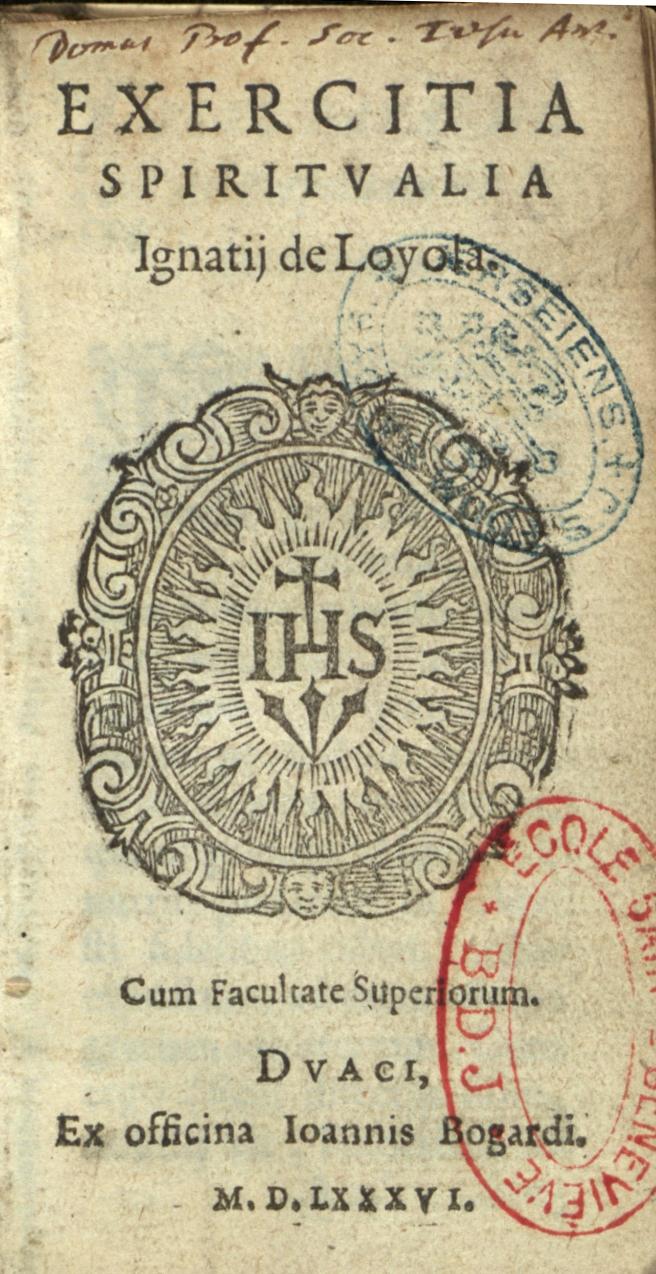 This website and blog is devoted to Ignatian spirituality, which means it draws from the Spiritual Exercises. You’ve heard it referenced here and there, but what exactly are the Spiritual Exercises?
This website and blog is devoted to Ignatian spirituality, which means it draws from the Spiritual Exercises. You’ve heard it referenced here and there, but what exactly are the Spiritual Exercises?
The Spiritual Exercises are not what began Ignatian spirituality—that would be Saint Ignatius’ life. But, Ignatius’ life is what inspired the Spiritual Exercises, one of the greatest gifts to the church. The Exercises is a handbook written by Ignatius for spiritual directors to guide retreatants through a month-long silent retreat. It comes from his own prayer, discernment, and life experiences. The purpose of the retreat is to transform a person through a deeply intimate encounter with God, primarily though the person of Jesus Christ. For those who’ve made the Exercises, they’ll likely tell you it was life-changing.
Ignatius would lead Jesuits through this 30-day retreat as part of their preparation for priesthood. Today the Spiritual Exercises are still made by Jesuits at the beginning of their formation. Many lay people and people of many Christian denominations have also made the Exercises.
The Spiritual Exercises are often made as a silent 30-day retreat, but Ignatius allows for an adapted version for those who do not have the luxury of a month’s worth of free time. This is called a 19th annotation retreat (named for its notation in the Exercises), or sometimes called a “retreat in everyday life”. It spreads 30 days worth of meditations and prayer periods over many months. There is also an 18th annotation retreat, which allows the most flexibility and can abbreviate the experience into themes or major meditations from the Exercises.
The structure consists of four “weeks” or parts (not 7-day weeks). Before the four weeks, however, are disposition days, which prepare a retreatant to enter into the Exercises. They help a retreatant get in touch with how they understand and know God.
- The First Week allows us to reflect on our own life, where we’ve come from, our history of sin, and most importantly, how God has been faithful to us through the years despite that sin. In light of our tendencies toward sin, we resolve to follow God as we continue through the Exercises.
- The Second Week is all about the call to follow Christ as disciples and it is the longest of the four weeks. This period begins with meditations on Christ as leader, God’s decision to become incarnate in the world, and Christ’s nativity. Much of the week involves imaginative prayer using Gospel passages from Jesus’ life. We see Christ’s witness and choose to make our life decisions in light of being a Christ-follower.
- The Third Week is meditation on the last days and hours of Christ, from the Last Supper to the Garden to the Passion on the cross. Here we ask for the grace of sharing in Christ’s sorrow.
- The Fourth Week is meditation on Christ’s resurrection and how God ceaselessly pours out love upon us.
There are other famous Ignatian meditations and insights scattered through the four weeks and the entire book of the Spiritual Exercises, including the Two Standards, rules for eating, the discernment of spirits, and making an election. From the Exercises flow various themes and meditations typical of Ignatian spirituality, as well as methods of prayer like contemplation (imaginative prayer), meditation, and discernment.
If you’d like to get a taste of the Spiritual Exercises I recommend praying with the Desires of the Heart audio series. You may also be interested in making an Ignatian retreat. Below are links so you can find a Jesuit retreat house near you.
| Make a retreat! Find a Jesuit retreat house in the that offers Ignatian retreats based on the Spiritual Exercises (US, English Canada, Asia Pacific, UK). |
Listen to an audio version of this post…
Music by Kevin MacLeod








What a concise yet thorough explanation, nicely done! I’ve just recently begun exploring the exercises and I am finding that my relationship with God and scripture is deepening. I’ve started a blog you and your readers may enjoy that uses great art to connect with the lectionary readings. I use an Ignatian form of contemplation to help the reader become immersed in the scene.
http.//seeinggodinart.wordpress.com
I’m so pleased I came across this blog and this post in particular. I am going to consider doing the above exercises during Lent.